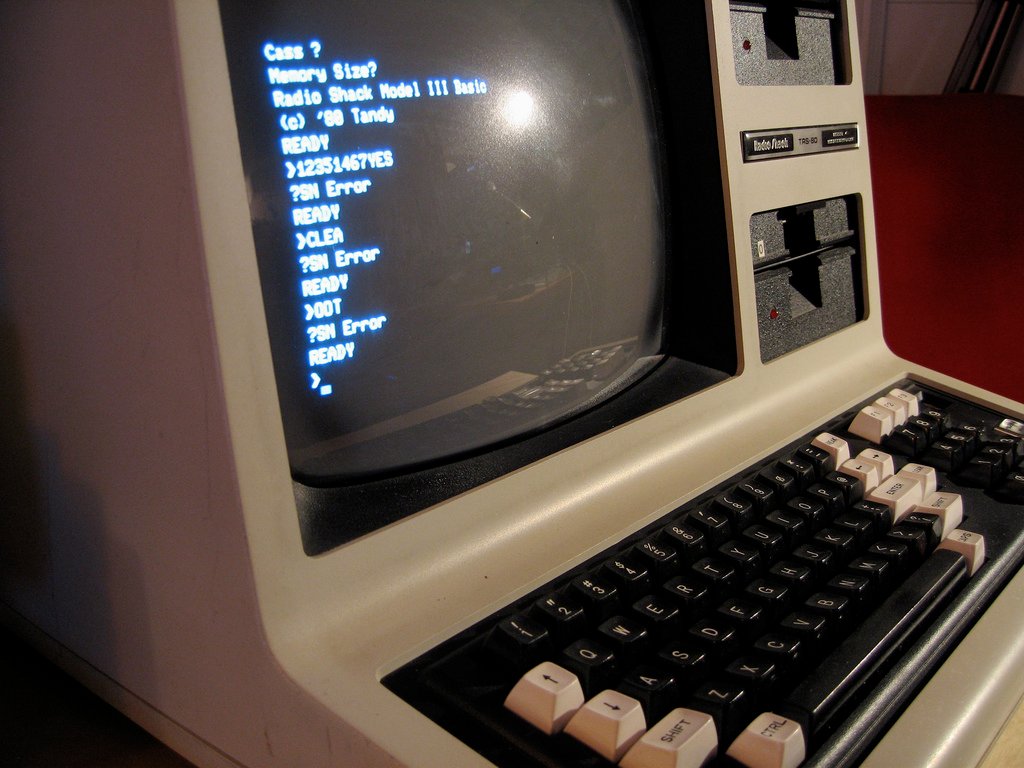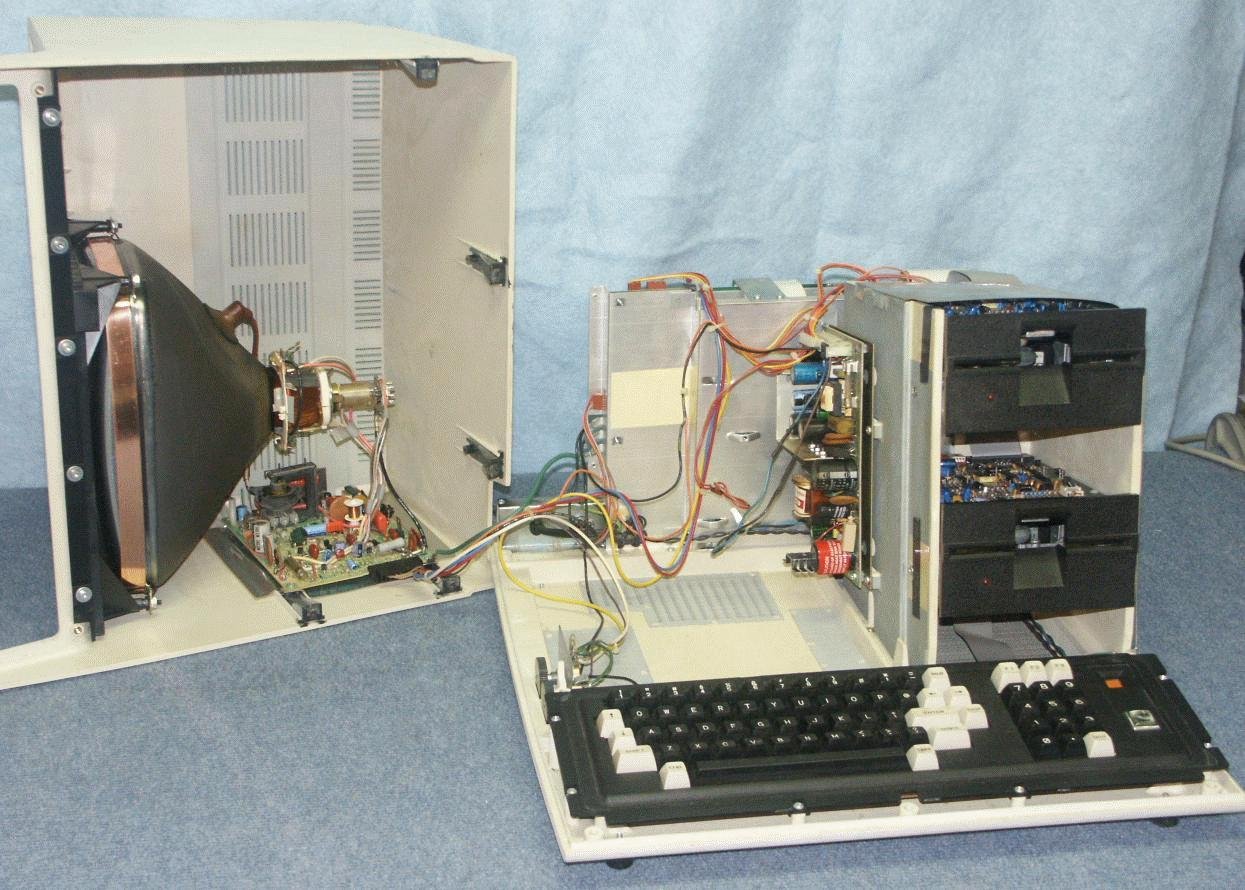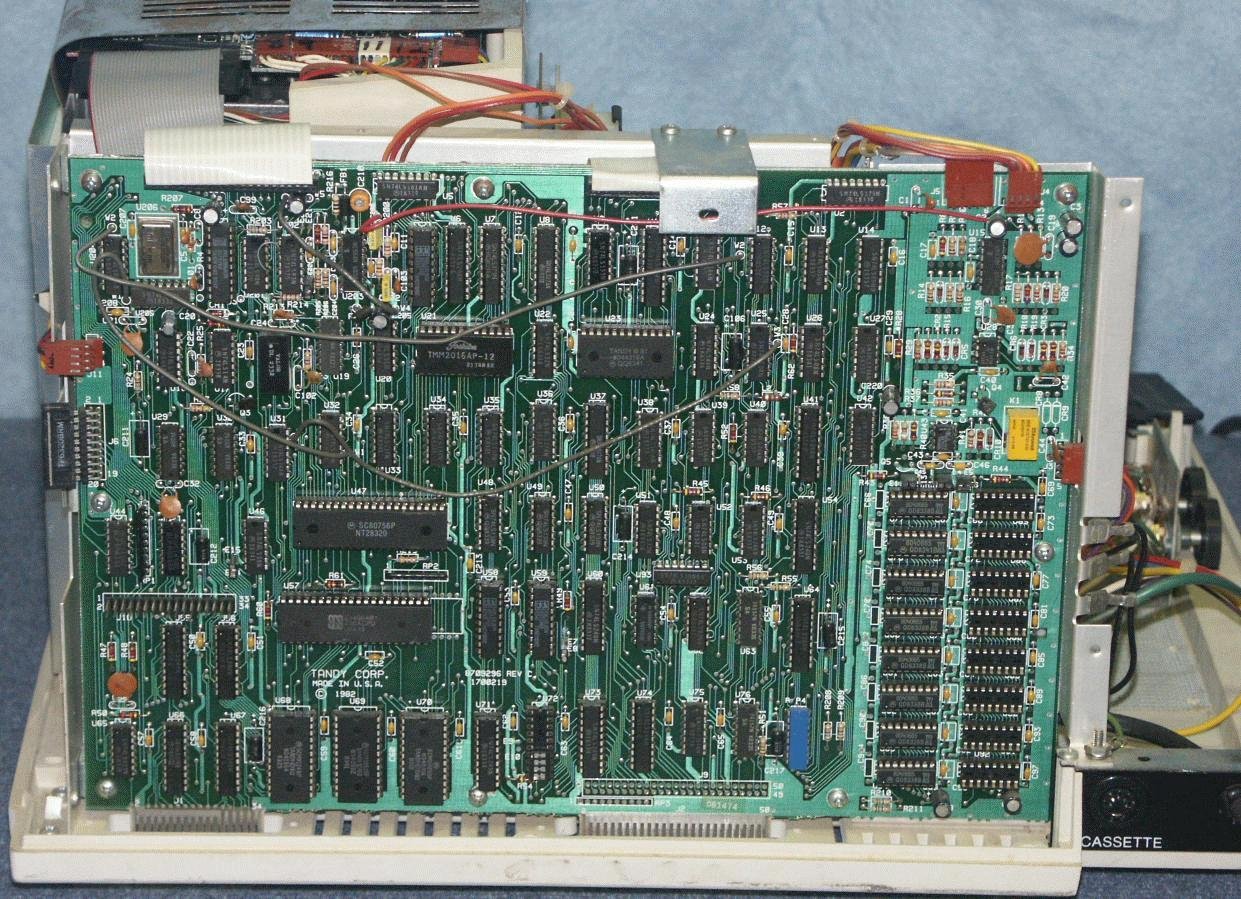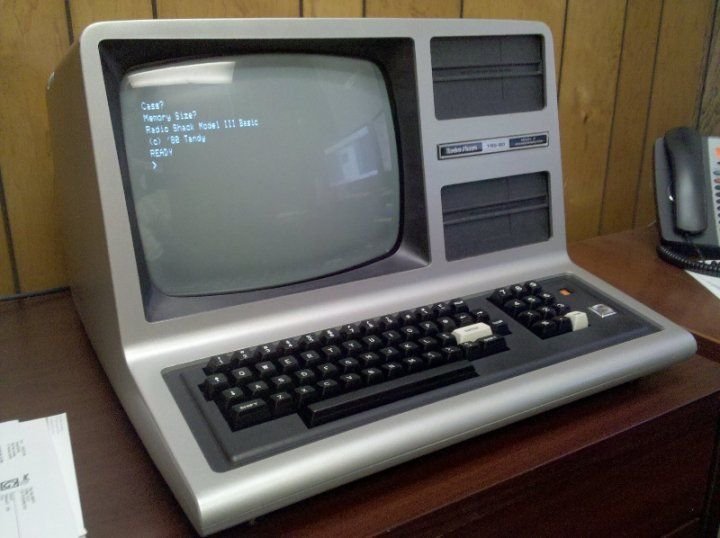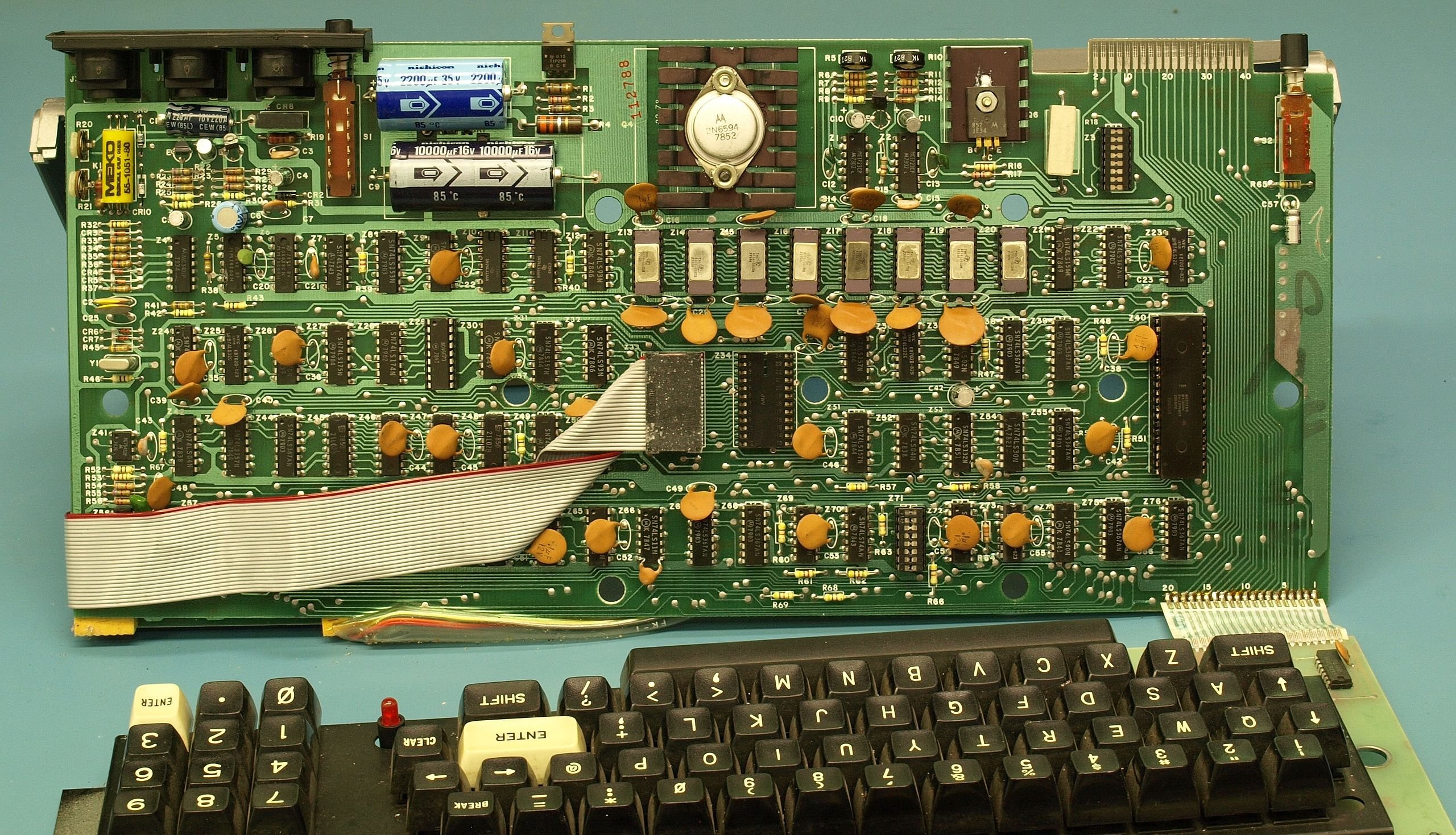Detail from 1984 Advertisement for the TRS-80 Model 4 Computer
http://darth-azrael.tumblr.com/post/163463241442/thegikitiki-detail-from-1984-advertisement-for
Radio Shack released the TRS-80 Model 4 as a follow-up to the Model III three years later in 1983. It looked essentially the same as the Model III except that it was an off-white color instead of grey/silver. Internally, there were some fairly significant upgrades, including:
- CPU: Z80A @ 4 MHz (compared to the ~2 MHz model III)
- Display: 80×24 (compared to the 64 columns of the Model III)
- Available 64KB model (Upgradeable to 128KB of RAM)
- Full support for CP/M without modification
It also included an expanded keyboard and TRSDOS 6. For this version of TRSDOS, Radio Shack contracted with the maker of LS-DOS/LDOS, a popular and generally more capable 3rd party DOS produced for the TRS-80 line. They continued to market LS-DOS separately but it and TRSDOS were now essentially the same. The Model 4 was also 100% compatible with the Model III whereas the III had some incompatibilities with the original TRS-80.
The following configurations were available:
- A diskless version with 16KB RAM (cassette only): $999
- A single disk version (180K single sided, double density) with 64KB RAM: $1699
- A dual disk version with 64KB RAM: $1999
There was also an upgrade available for Model IIIs that essentially turned it into a Model 4. It included a new motherboard and keyboard and cost $799.
The Model 4 was the last major revision the the TRS-80 line though there would be a somewhat enhanced Model 4D released in 1985 that would be sold through at least 1991.
As I mentioned in a previous post, my high school still had TRS-80 Model IIs and 4s in 1989-1990 that were used for programming (BASIC) classes. I’m not sure how much longer they were there though I think they were being used at least one more year after that and possibly longer.

